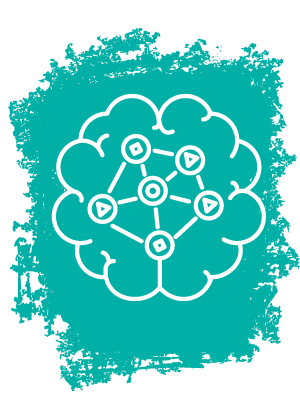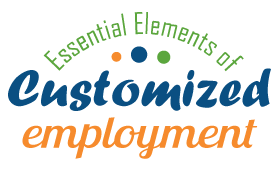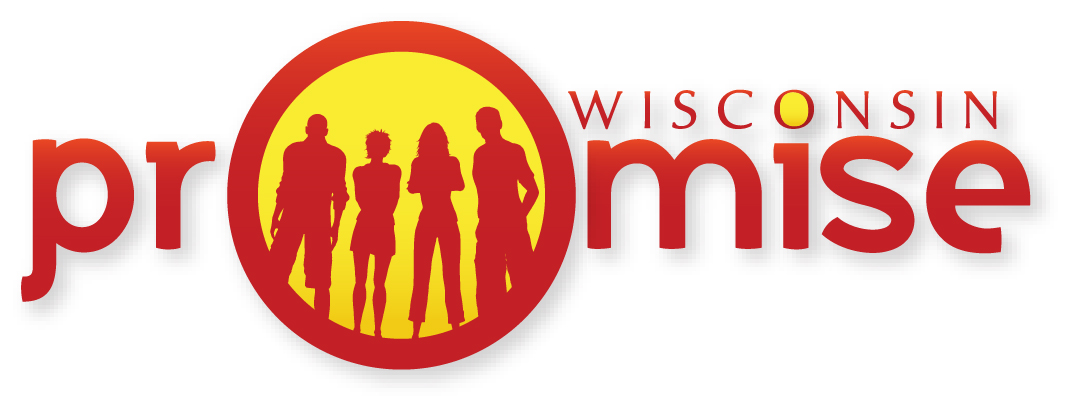
Customized Employment
Connecting Employment Needs of People with Significant Disabilities to Business’s Needs
Customized employment is a flexible process that connects a job seeker who has unique interests and abilities to an employer who has an unmet business need. This job is tailored to fit the needs of both the employer and the job seeker.
A traditional job seeking approach often does not work for a person with significant life complexities and barriers to employment, such as a significant disability. The customized employment process is designed to ensure the person with a disability is the driver of the job-seeking process and employment outcome. It results in employment that takes place in the community or in a business owned by an employer, and pays at least minimum wage.
Goals of Customized Employment Training
- Recognize good candidates for customized employment
- Know how the Workforce Investment and Opportunities Act (WIOA) defines customized employment
- Learn the essential elements of customized employment
- Understand the process of customized employment
Who is a Good Candidate for Customized Employment?
Job seekers with significant disabilities who have not been or who are unlikely to be successful with traditional, demand-side employment are good candidates for customized employment. Whereas demand-side employment focuses on meeting the employer’s needs, customized employment is flexible and focuses on meeting both the employer and the employee’s needs.
Customized Employment and the Workforce Investment and Opportunity Act
People with significant disabilities have greater access to customized employment services since the 2014 Workforce Investment and Opportunity Act (WIOA) expanded its definition of supported employment to include customized employment:
The term supported employment services means ongoing support services, including customized employment, needed to support and maintain an individual with the most significant disability.
Below are the qualities of customized employment, as defined by the WIOA:
- Based on an individualized determination of the unique strengths, needs, and interests of the individual with a significant disability
- Designed to meet the specific abilities of the individual with a significant disability and the business needs of the employer
- Carried out through flexible strategies (e.g., job exploration by the individual, working with an employer to facilitate placement, etc.)
Working with an employer to facilitate placement could look like:
- Customizing a job description based on current employer needs or on previously unidentified and unmet employer needs
- Developing a set of job duties, a work schedule and job arrangement, and specifics of supervision (including performance evaluation and review), and determining a job location
- Using a professional representative chosen by the individual, or if elected self-representation, to work with an employer to facilitate placement
- Providing services and supports at the job location4
Essential Elements of Customized Employment
The essential elements of customized employment correspond with those of supported employment to assure the employer and employee with a disability have a successful working relationship.
These elements serve as a universal guide for service delivery and training providers:
- Job duties are negotiated with the employer. Job duties are set as a result of negotiating with employers. This is in contrast to demand-side employment, where job duties are set by employers prior to seeking an employee.
- One person is matched with a job. Customized employment involves matching an employer with one employee, rather than a group of employees with disabilities.
- Employees are paid at least minimum wage. Pay for a customized job is based on:
- Target wage set by the employment seeker
- Entry wage paid by the employer
- Typical wage paid for similar positions
- Work is performed in the community or businesses owned by an employer. Work tasks do not include contract work, such as the work historically offered to people with disabilities by organizations whose primary purpose is to serve people with disabilities.
- Employment relationships are mutually beneficial and voluntary. Job developers who represent the job seeker look for a successful fit between an employer’s needs and a job seeker’s strengths, needs, and interests. Voluntary, negotiated relationships with employers are encouraged.
- Skilled job developers represent the job seeker. A job developer typically approaches potential employers on behalf of the job seeker and explains customized employment. Whenever possible, the job seeker is included when the employer is approached. In some instances, the job seeker may take the lead to represent themselves when approaching the employer.
- It is understood that the job-seeker will be successful. Customized employment is a “no-fail” process based on the belief that all people can work successfully.
- Customized self-employment is an option. The job-seeker and job developer may find during the discovery process that a job-seeker’s strengths, functioning, and interests align well with opportunities for customized self-employment.
- Customized employment is best for people who aren’t likely to be successful with traditional employment models. Many people with disabilities can benefit from traditional, demand-side employment as long as they are well-matched to jobs and receive reasonable accommodation and post-employment support, as needed. Customized employment is for people who are more likely to reach their employment goal with this approach.
Process of Customized Employment
There are several stages of the customized employment process:
Strategies
Here are some effective strategies for employment representatives:
Practice your presentation with others before meeting with the employer.
It could be especially helpful to practice it with someone who could reflect an employer’s perspective.
Use an informational approach with employers, rather than persuasive, pressure-based sales tactics.
Customized employment involves creating a mutually beneficial employment relationship between a job seeker and an employer — if either party feels it’s not a good fit, it’s best to look for a different match.
Use “positive disclosure” to give the employer information about the work impact of the job seeker’s disability, only with clear permission from the job seeker.
Employers may be willing to customize a job if they understand why the employment seeker is not going through the typical personnel practices of the business.
Give employers the clear message.
The goal is for both the employer and employee to succeed.
For more strategies, read WINTAC’s “Recommendations for Customized Employment Practices" (PDF)
Tools
Following are some tools and resources to learn even more about this topic.
Featured Resources

Essential Elements of Customized Employment
A brief training introducing the essential elements of Customized Employment.

Improving Efficiencies in Supported and Customized Employment Services
Explore the following tips on how to maximize the efficiency of supported and customized employment to improve employment outcomes at a cost that is reimbursable through state funding streams. Customized Employment: A Service Provider Business Model (PDF)

Customized Employment Q & A
VCU Rehabilitation Research and Training Center answers to your questions about Customized Employment.

CE Delivery Checklist
WINTAC provides a great checklist for delivering customized employment (PDF).
General CE
- Thought Sauce! Hot Ideas for Cool Employment – Foundational Readings for Customized Employment (PDF), Griffin-Hammis Associates, LLC& The Center for Social Capital, Inc.
- Resources and Strategies for Competitive Integrated Employment, WINTAC
- Customized Employment: It Really Works! (PDF) Marc Gold & Associates
- Customized Employment: Stories and Lessons from the Field (PDF), Griffin-Hammis Associates
CE and WIOA
- Implementation of Customized Employment Provisions of WIOA within VR Systems (PDF), Tammy Jorgensen Smith, PhD1 • Christina J. Dillahunt-Aspillaga, PhD • Raymond M. Kenney, MS
- Demand-Side Job Development and System Change. By: Gilbride, Dennis, Stensrud, Robert, Rehabilitation Counseling Bulletin, 00343552, Jun99, Vol. 42, Issue 4
Discovery
- Strategy for Youth - Guided Group Discovery, Facilitators Guide (PDF), Lead Center Guided Group Discovery may be particularly relevant for youth transitioning from high school to adulthood. This version of the Guided Group Discovery curriculum is adapted to provide examples more relevant to youth, who may have limited experience with work due to their age.
- Customized Employment Systems Innovation Brief: Implementing Customized Employment, Guided Group Discovery and Self-Guided Discovery in a Variety of Settings and with a Variety of Partners (PDF), LEAD Center
CE Plan Design
- Customized Employment Plan Design Guide (PDF), Griffin-Hammis Associates
Informational Interviews with Employers
Customized Employment Competencies
- Customized Employment Competency Model (PDF), created by ICF International
How to Implement Customized Employment within an Agency

